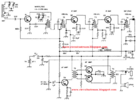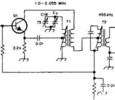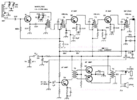jamesadrian
- Apr 4, 2023
- 19
- Joined
- Apr 4, 2023
- Messages
- 19
Thank you for that response. There are statistical tests that can be performed to determine if a large sequence of "random" numbers meets some definition of randomness (there are several definitions currently in use). So, if you want to build and market a commercial device, you need to determine which statistical test will satisfy your potential customers. That it turn will help define how you create a set of working "random" numbers you can write into a flash memory.
Many things, other than noise from outer space, generate random events. One characteristic of true random noise is it exhibits a flat frequency spectrum from zero to infinity, which our ears interpret as "white noise." Of course our ears are limited in frequency response, so the white noise you think you hear is actually not. If you use real components, the frequency spectrum will be truncated, and the frequency spectrum low and high end-points will be "rounded off" as a characteristic of the device generating "random" numbers.
There are many electronic devices that exhibit randomness. Ordinary resistors, operating at temperatures greater than absolute zero, create Johnson noise because of the thermal motion of charge carriers (electrons). Perhaps you can use a resistor as a noise source to generate random numbers.
Getting noise signals from space, uncorrupted by man-made signals from satellites in Earth orbit, is difficult and getting worse. There is a lot of stuff up there generating RF signals. You need to build a radio-telescope antenna with a very narrow beam width (large dish) and point it at a "quiet" portion of the sky. Or perhaps use our sun as your noise source. Radio astronomers go to great lengths to remove noise from the signals they study. It is not unheard of to cool the low-noise amplifier, mounted at the antenna feed, either with a cryogenic liquid (nitrogen) or with a Peltier heat pump. Operating in a cold climate would help too.
hevans1944,
Thank you for this very valuable information. I now suspect that space noise may not be the best way to serve the customer.I am still interested in learning the best way to make a non-linear amplifier. Some say that some transistors are non-linear and measures are usually taken to reduce this non-linearity in the ultimate output. I wonder if heating up a single transistor to do the amplifying would do the job. Does heat increase the non-linearity of transistors?
James Adrian



